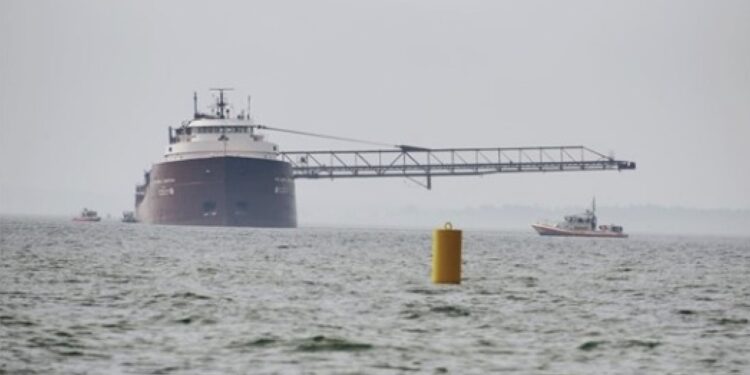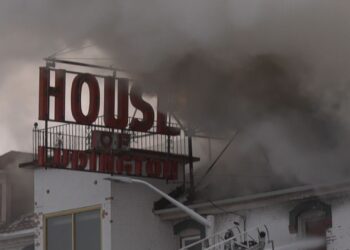SAULT SAINTE MARIE, Mich. – On Sunday, Hay Lake marine casualty responders escorted the M/V Hon. James L. Oberstar from Carbide Dock enroute to Fraser Shipyards in Superior, Wisc.
After reviewing engineering assessments of the M/V Hon. James L. Oberstar, the Hay Lake Marine Casualty Unified Command (UC) with advisement from the Army Corps of Engineers and the Salvage Engineering Response Team (SERT) from the U.S. Coast Guard Marine Safety Center determined that the vessel is structurally sound and fit to make the 28-hour transit from Carbide Dock to Fraser Shipyards in Superior, Wisc. Once the vessel arrives at the shipyard, a containment boom will be ready to deploy as needed.
“This incident is not complete until the vessel is safe and secure at Fraser Shipyard,” says U.S. Coast Guard Captain James Bendle, Federal On-Scene Coordinator for the Hay Lake Marine Casualty Unified Command. “Everyone supporting this response is highly focused on ensuring that personnel aboard and escorting the vessel are safe, that our waterways and wildlife are protected, and that any impacts to economic activity are mitigated.”
The UC consists of the U.S. Coast Guard, the Michigan Department of Environment, Great Lakes, and Energy (EGLE), Chippewa County, and Interlake Steamship Company. Multiple federal, state, local, and partner organizations are also assisting in the response. Representatives from the Northern Michigan Area Committee including the Army Corps of Engineers, the Sault Tribe of Chippewa Indians, the Bay Mills Indian Community, and the City of Sault Ste Marie Ontario are
participating and advising the UC throughout the response.
Bilateral coordination between Canadian and U.S. representatives triggered an international agreement to facilitate a joint response, as outlined in the Canada-United States Joint Marine Pollution Contingency Plan (JCP) and its Great Lakes Annex (CANUSLAK).
For WZMQ 19’s original report on this story, click here.


















